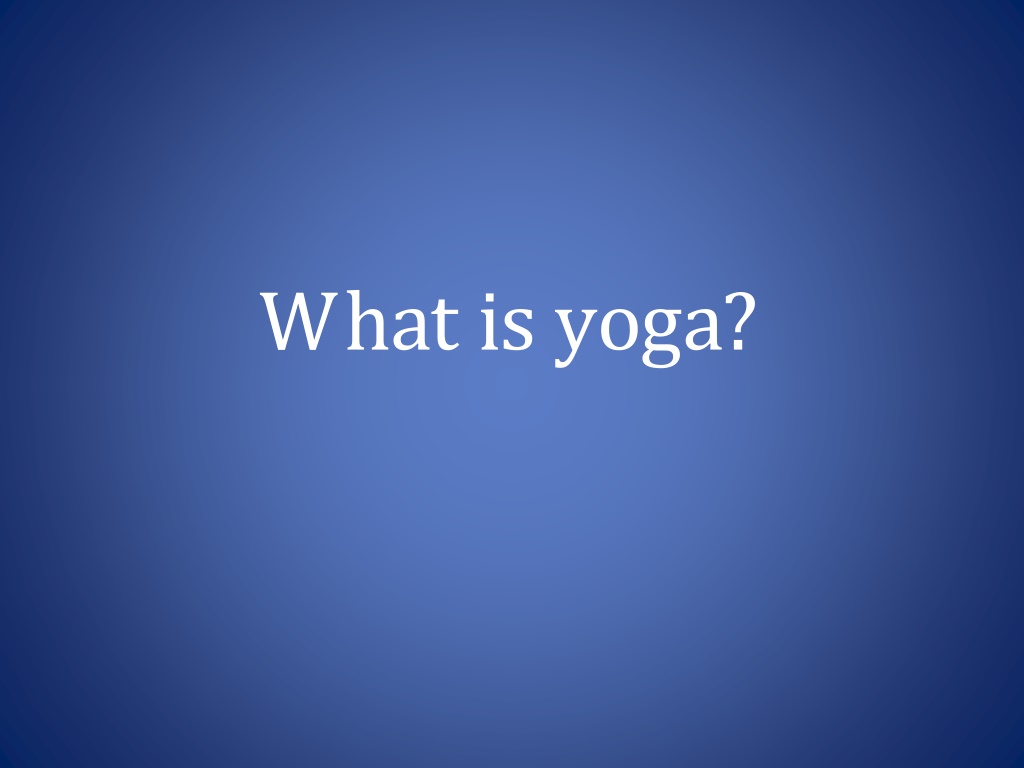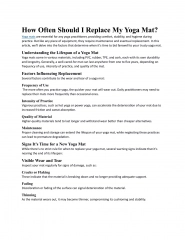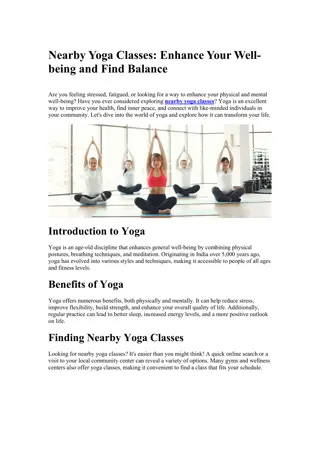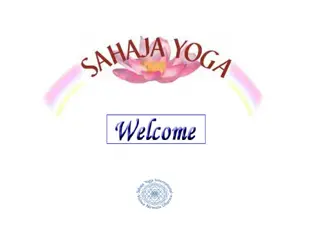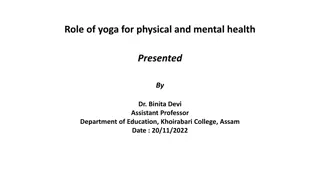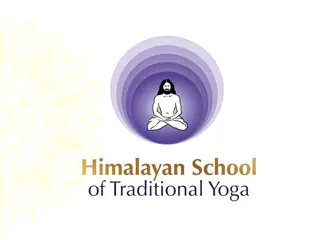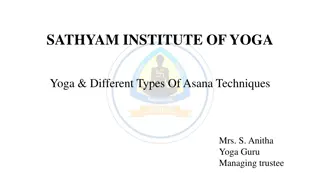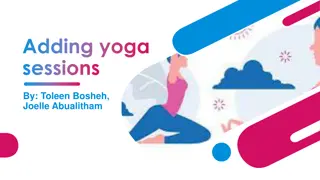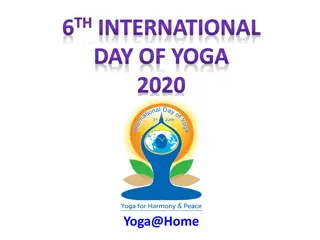Evolution of Yoga Through Time
Study the wide spectrum of yoga practices over 3000 years to understand its cultural absorption and evolution. Discover yoga's historical roots, from Sanskrit origins to modern interpretations."
Download Presentation

Please find below an Image/Link to download the presentation.
The content on the website is provided AS IS for your information and personal use only. It may not be sold, licensed, or shared on other websites without obtaining consent from the author. Download presentation by click this link. If you encounter any issues during the download, it is possible that the publisher has removed the file from their server.
E N D
Presentation Transcript
J une 2013 trial in San Diego: Can yoga be taught in elementary schools? Is yoga religious?
Yoga, the judge said, is similar to other exercise programs, such as dodgeball. -- The LA Times
Our goal this semester: to study the wide variety of ways yoga has been definedand practiced over the past 3000 years, in order to attempt to understand how it has evolved and changed through time as it was absorbed into different cultures and worldviews.
Yoga in the Sanskrit dictionary: harnessing a horse to a war chariot mental concentration strenuous discipline one of six schools of Indian philosophy magic trick or spell union; connection
The Vedic hymns used the term yoga to refer to the yoking of a warhorse to its chariot, and so yoga as yoking had the extended meaning of war or wartime. -- David Gordon White
Violence and constraint have been fundamental to the meaning of the word yoga throughout its history. -- J ean Varenne
Yogain the Katha Upanishad (400-300 BCE)
The Self is hard to percieve, wrapped in mystery, set in the cave, and hidden in the depth. The wise one CENTERS AWARENESS ON THIS SELF, and realizing it as divine, leaves far behind both joy and sorrow. Katha Upanishad 2:12-14
Adhyatma-yoga: the yoga of centering awareness on the inner Self
This is what is called yoga: the steady concentration of the senses. Katha Upanishad 6:11
Yoga: harnessing the senses The body is like a chariot in which the self rides. The intelligence is the charioteer, with the mind as his reins. As for the horses, those are the senses; the world is their arena. Katha Upanishad 3.3
Three definitions of yoga in the Bhagavad Gita
Definitions of yoga in the Bhagavad Gita Yoga is said to be equanimity. Yoga is skill in action. Let this be known as yoga: unbinding the bondage to suffering.
Three paths of yoga in the Bhagavad Gita Karma yoga: the yoga of action J nana yoga: the yoga of knowledge Bhakti yoga: the yoga of devotion
Karma yoga: the yoga of action Action imprisons the world unless it is done as an offering. Surrender all actions to me and fix your attention on your inner self. Relinquishing the fruit of action, the disciplined person attains perfect peace. -- Bhagavad Gita 3.9, 3.30, 5.12
J nana yoga: the yoga of knowledge Persistence in knowing the self, this is called knowledge The supreme infinite spirit is what is to be known. -- Lord Krishna, Bhagavad Gita 13.11-12
Bhakti: the yoga of devotion to God Fix your mind on Me, worshiping Me, sacrificing to Me, bowing down to Me; in this way you shall come to Me, I promise, for you are dear to Me. -- Lord Krishna, Bhagavad Gita 18.65
Samkhya and yoga: Samkhya provides the metaphysical or theoretical basis for the realization of purusha, and Yoga offers the technique or practice itself. Edwin Bryant, The Yoga Sutras of Patanjali
Samkhya A dualistic metaphysics, two fundamental principles: purusha: spirit prakriti: matter
Yogain the Yoga Sutras (50-300 CE)
Yoga is the stilling of the changing states of the mind. When that happens, the seer abides in its own true nature. YS 1:2-3
Ultimate liberation (kaivalya) is when the power of consciousness is situated in its own true nature. YS 4:34
Kaivalya literally means the state of kevala,or aloneness, onlyness, one s- own-ness, not-connected-with- anything-elseness. In other words, purusha s awareness is now absorbed exclusively in its own nature. Edwin Bryant, The Yoga Sutras of Patanjali
Posture (asana) should be steady and comfortable. (Such posture should be attained) by the relaxation of effort and the absorption in the infinite. YS 2:46-47
